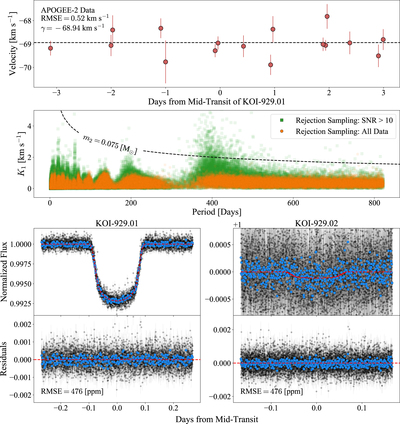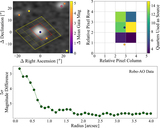Image Details

Caption: Figure 2.
Velocimetry and photometry of Kepler-730. The top panel shows the radial velocities phased to the period of KOI-929.01. The middle panel presents the surviving population with ﹩e\lt 0.5﹩ after rejection sampling. The contour for a star at the hydrogen mass burning limit (with ﹩i=90^\circ ﹩ and e = 0) around Kepler-730 is plotted for reference. The code thejoker performed ﹩\gt 4\times {10}^{6}﹩ (222) samplings and the large surviving population (﹩\gt ﹩ 60,000) demonstrates that our radial velocities are consistent with no statistically significant detection of a close stellar companion. The bottom row displays the phased light curves and best models with the rms error (RMSE). The small dots are the raw data and the larger circles are the data binned to a 1-minute cadence.
Copyright and Terms & Conditions
© 2019. The American Astronomical Society. All rights reserved.




